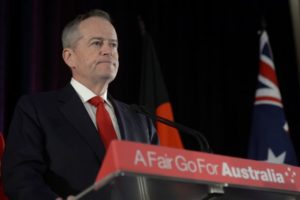by A. Jacobs & A. Préat, May 20, 2019 in SSRN.Elsevier
The focus of this study is based on a detailed analysis of the hyperthermal events of the
Paleocene / Eocene limit of 56 Ma and the lower Eocene (for the 54-52 Ma interval, Figure 1).
This example will show that the Earth has experienced many times much higher temperatures
than today, with warmer, sometimes more acidic oceans and an atmosphere much richer in CO2
(or CH4) than the current one. Are these past events precursors of the current situation?
Keywords: global warming, climate change, Paleocene, Eocene, hyperthermal events
…
by K. Richard, May 20, 2019 in NoTricksZone
A new analysis of recent trends for the Greenland ice sheet reveals that since 2012 there has been an abrupt slowing of melt rates and a trend reversal to cooling and ice growth.
• In 2018, 26 of Greenland’s 47 largest glaciers were either stable or grew in size.
• Overall, the 47 glaciers advanced by +4.1 km² during 2018. Of the 6 largest glaciers, 4 grew while 2 retreated.
• Since 2012, ice loss has been “minor” to “modest” due to the dramatic melting slowdown.
• Summer average temperatures for 2018 were lower than the 2008-2018 average by more than one standard deviation.
• Since 2000, the extent of the non-snow-covered areas of Greenland has increased by 500 km² per year.
…
by GWPF from WallStreetJ, May 19, 2019
The right in Australia won on the sharp contrast with the left on taxes, growth and climate change.
If American Democrats want a warning about the consequences of embracing the Green New Deal, look no further than Saturday’s election shocker in Australia. The opposition center-left Labor Party had led in the polls for months but lost as voters rejected its move left on taxes, spending and above all on climate change.
The ruling Liberal-National Coalition had been divided and tossed out two prime ministers during its nearly six years in power. Scott Morrison, the compromise choice as Prime Minister last year, managed to unite conservatives around a platform that stressed economic growth, tax cuts and support for the country’s energy producers.
Labor leader Bill Shorten promised to raise taxes on the “wealthy,” but his main theme was curbing climate change. Labor promised to cut carbon emissions nearly in half by 2030 compared to 2005 levels while subsidizing wind and solar. Mr. Shorten and Labor refused to support a job-producing coal mine in Queensland, and their candidates were routed in the resource-rich province.
…

Bill Shorten, leader of the Labor Party of Australia, reacts as he concedes defeat during the Labor party election night event in Melbourne, Australia, on Saturday, May 18, 2019. PHOTO: CARLA GOTTGENS/BLOOMBERG NEWS
La géologie, une science plus que passionnante … et diverse

